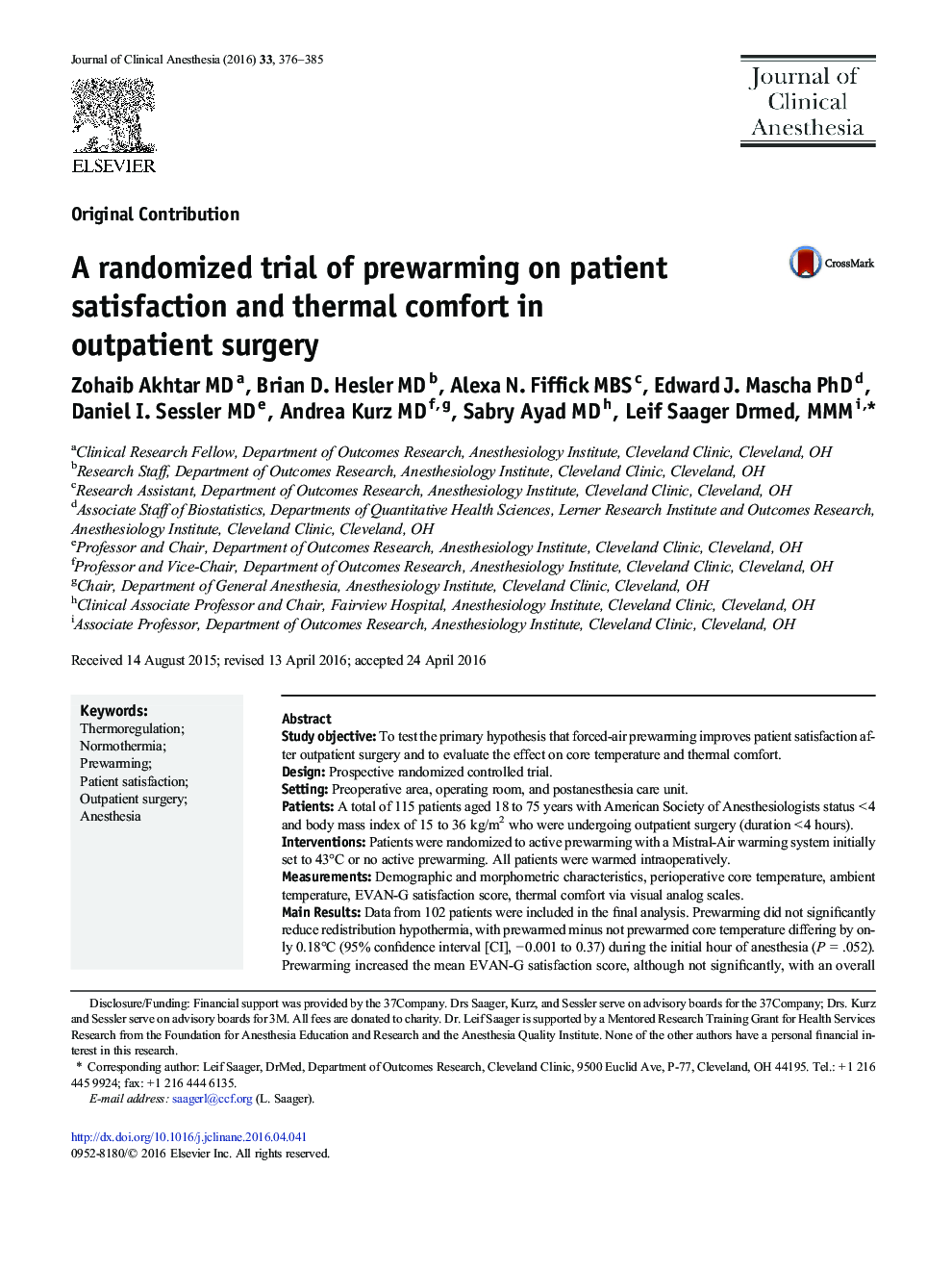| Article ID | Journal | Published Year | Pages | File Type |
|---|---|---|---|---|
| 2762127 | Journal of Clinical Anesthesia | 2016 | 10 Pages |
•Prewarming increased thermal comfort.•Trend of higher satisfaction in prewarmed patients.•Prewarming did not reduce redistribution hypothermia.
Study objectiveTo test the primary hypothesis that forced-air prewarming improves patient satisfaction after outpatient surgery and to evaluate the effect on core temperature and thermal comfort.DesignProspective randomized controlled trial.SettingPreoperative area, operating room, and postanesthesia care unit.PatientsA total of 115 patients aged 18 to 75 years with American Society of Anesthesiologists status < 4 and body mass index of 15 to 36 kg/m2 who were undergoing outpatient surgery (duration < 4 hours).InterventionsPatients were randomized to active prewarming with a Mistral-Air warming system initially set to 43°C or no active prewarming. All patients were warmed intraoperatively.MeasurementsDemographic and morphometric characteristics, perioperative core temperature, ambient temperature, EVAN-G satisfaction score, thermal comfort via visual analog scales.Main ResultsData from 102 patients were included in the final analysis. Prewarming did not significantly reduce redistribution hypothermia, with prewarmed minus not prewarmed core temperature differing by only 0.18°C (95% confidence interval [CI], − 0.001 to 0.37) during the initial hour of anesthesia (P = .052). Prewarming increased the mean EVAN-G satisfaction score, although not significantly, with an overall difference (prewarmed minus not prewarmed) of 5.6 (95% CI, − 0.9 to 12.2; P = .09). Prewarming increased thermal comfort, with an overall difference of 6.6 mm (95% CI, 1.0-12.9; P = .02).ConclusionActive prewarming increased thermal comfort but did not significantly reduce redistribution hypothermia or improve postoperative patient satisfaction.
